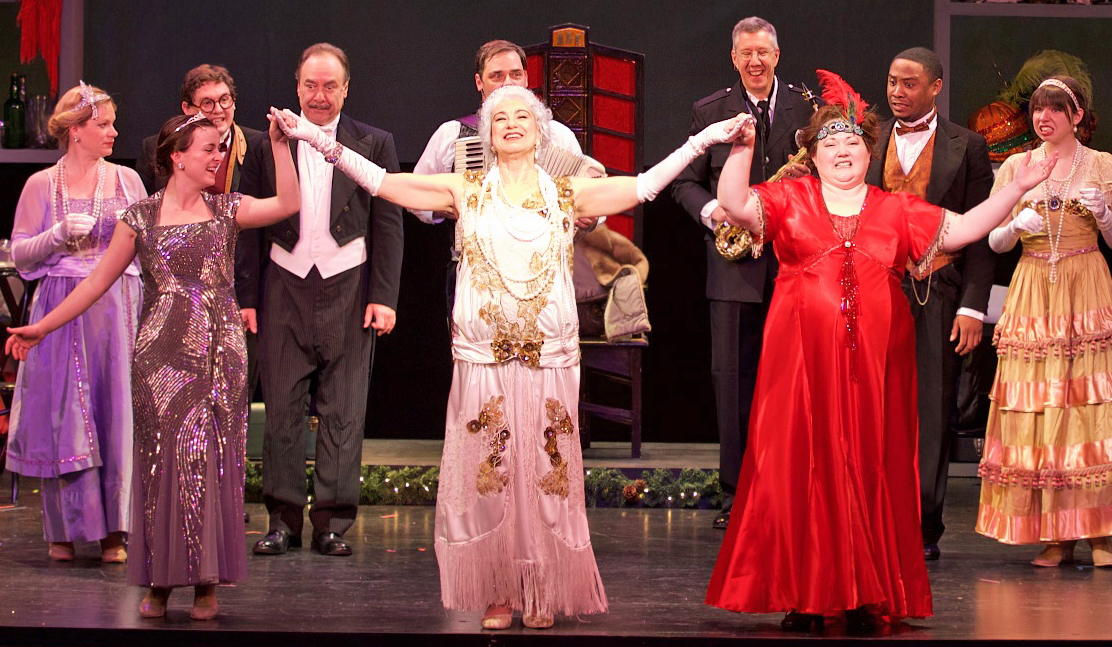
The Three Maries — a Philadelphia Phable. Book, lyrics & music by Michael Ogborn, at the Prince Theater.
Many cities brag about being a place where people can reinvent themselves. Philadelphia does not do so.
In Philly there’s always somebody who remembers you from when you were born and identifies you by where you grew up. And you can’t rise above your station as long as you speak in a dialect that establishes your origin. That’s the message within Michael Ogborn’s clever new musical, The Three Maries—a Philadelphia Phable.
He is a prolific Philadelphia-born creator of book, music and lyrics for theatrical productions. Specifically here, Ogborn writes about the Philadelphia accent which is perceived as low class, just as Cockney was in London a century ago.
The plot’s antecedent is George Bernard Shaw’s Pygmalion (and its musical version, My Fair Lady). The story is about dialect and the abuse of diphthongs that separates downtown Philadelphians from upper-crust Main Liners. As Ogborn’s lyric says, “a sound that pins you down to a certain part of town.”
Ogborn throws barbs at the insularity of Philadelphians, but cloaks his criticism with affectionate humor. It’s worth noting that underneath the comedy (as with G.B. Shaw) is a serious critique of societal behavior.
Allusions to Cinderella add to the broadly comic plot.
It’s 1926 and Big Marie (Kathy Deitch), from the stoops of Kensington, wants her daughter to marry a Mummer, just as she did. The people in Marie’s neighborhood are so insular that they think of Rittenhouse Square as a foreign land. But her vivacious daughter Little Marie (Rachel Brennan) yearns to leave Philly and travel the world. She is secretary for a boss (Paul Nolan) who puts her in charge of making arrangements for Queen Marie of Romania (Mary Martello) to visit Philadelphia during its sesquicentennial exposition.
What was a sesquicentennial? The script makes fun of that term which was a hoity-toity way of saying the nation’s 150th birthday. (The queen of Romania actually did visit Philadelphia in 1926.)
Little Marie tries to make herself acceptable to the queen by changing her dialect. Meanwhile, the queen is accompanied to Philadelphia by her cousin (Jeffrey Coon) who is still single and looking for the right girl, and who collects foreign accents as a hobby.
As you can imagine, the cousin falls in love with Little Marie.
Supporting characters include Banjo Eddie Philapenna, a dock worker and the captain of the Dock Street Troubadours. His name derives from the abbreviation for the state, Penna, commonly used in the 1920s. All year long these mummers put blood. sweat and sequins into preparing for the New Year’s Day parade.
It’s fun to hear these folks declaim their Philly dialect: sit daln for sit down, doon for doing, wooder glazz for water glass, and when ordering takeout, “a cyouk and a hyougie to go.”
Ogborn’s script jokes about Philadelphia institutions — City Hall, the Mummers, Horn & Hardart’s — while his score contains 1920’s Jazz, Tin Pan Alley and the Mummer’s string band sound.
Ogborn adds enjoyment by referencing other songwriters. His “M-A-R-I-E spells Marie” is homage to George M. Cohan and his “Mary Is a Grand Old Name/but with propriety, society will say Marie.” And Ogborn pays tribute to Cole Porter by writing a beguine ballad that includes the repeated lyric from Kiss Me, Kate, “Marry me, marry me.”
Scenery by Dan Efros features projections of vintage Philly photographs. Director-choreographer Peter John Rios provides a spectacle with sequins and feathers, boas and capes, and Three Maries comes to a happy conclusion with everyone — including audience members — doing the Mummers Strut.
Musical highlights of the show:
Read other reviews on The Cultural Critic